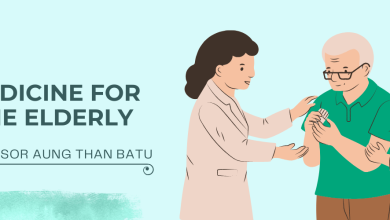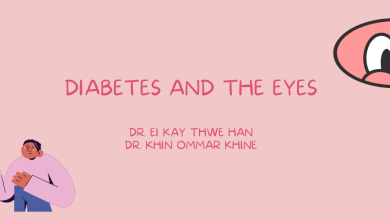A new scoring system can help to make decision for CPAP indication.
Zay Ya Aye
Very recently, a group of sleep physicians from Europe and Latin America has developed a new scoring system proposed as a decision – making score to identify the need for CPAP treatment beyond the Apnoea Hypopnoea Index (AHI).
Currently, CPAP is the preferred treatment for a significant number of OSA patients, but there is no consensus between various guidelines or recommendations regarding its indications.
The controversies arise from sole reliance on AHI matrix making the therapeutic decisions to indicate CPAP in adult OSA patients.
These factors suggest a need for a more comprehensive evaluation especially considering the diverse OSA clinical phenotypes. It is crucial to identify which phenotype might benefit from CPAP treatment 1.
This group of sleep medicine specialists proposed a multidimensional assessment of OSA, aiding decision on selecting patients who should receive CPAP.
Development of the DECHA scoring system (BOLD)
Many sleep medicine specialists from various countries analyzed the criteria for CPAP indications in patients with OSA.
Using the Delphi method, multiple rounds of questions were carried out to score different aspects relating severity of OSA to associated disorders that showed improvement with CPAP use. When consensus was reached on scores required for CPAP indications, an analysis was done comparing the application of the score to usual clinical practices at two reference university hospitals. Final agreement between various specialists were achieved and the following scoring system 1 was proposed.
DECHA scoring system
D = Disturbance (respiratory disturbance or AHI)
1 – Mild severity = Score = 2
2 – Moderate severity = Score = 5
3 – Severe = Score = 10
E= Epworth Sleepiness Scale (sleepiness scale developed by Epworth Hospital, Malborne, Australia)
< 10 or equal to 10= Score= 0
> 10 = Score= 8
Abnormal day time sleepiness is a strong indicator for CPAP treatment 2
C=Cardiovascular comorbidities
1- Hypertension (dipper)**= Score=2
**In a healthy subject, there is nocturnal fall of BP (nocturnal dipping) around 10% from base line value during habitual sleep (dipper) 3 .
2-Cardiac arrhythmias, CHF, stroke (any one)= Score=5
3-Resistant Hypertension (non- dipper, BP elevation is more pronounce during REM sleep stages)3= Score= 8
<10%= Score=0
> 10%= Score= 5
During a standard sleep study, SPO2 desaturation is continuously measure by pulse oxymetry device overnight. Actually, this is not Pao2 measurement by ABG analysis (invasive procedure), but as a surrogate method. SPO2 fall (SPO2 <90% or T 90) more than 10% of total sleep time is considered significant.
A=Accident (workplace or road traffic accident)
No= Score=0
Yes= Score=8
How to make decision to treat an adult OSA patient with CPAP by using this system?
Total score of >10 = CPAP treatment Total score < 10= No CPAP
This scoring system provided a standardized approach to CPAP indication for OSA management.
Rather than relying only on AHI value, patient’s symptoms and comorbid disorders were also considered for decision – making (CPAP or not). It also complies with multispecialty care standards and good clinical practice statements.
References
1- D.Schonfield et;al; DECHA score; a decision-making score to identify the need for CPAP treatment; Journal of Sleep Medicine; Vol 131, July 2024, 106499
2- Treatment of adult OSA with PAP; AASM clinical practice guidelines; J Clin Sleep Med.2019;15(2)335-343
3- OSA in cardiovascular disease, Review and proposed clinical management s ; J AM Heart Assoc.2019;8;e010440
Author Information
Zay Ya Aye
M.B., B.S, M.Med. Sc, Internal Medicine.






